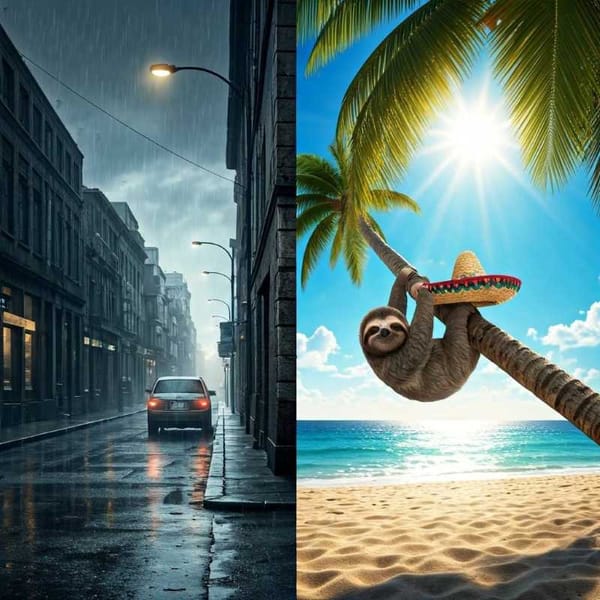Why we must move towards a more responsible tourism
The pandemic allows us to rethink if we want to preserve a model with high environmental impact. According to the United Nations World Tourism Organization, Mexico ranked the third most visited country in 2020 and the 13th in terms of tourism-related foreign exchange earnings.

According to the United Nations World Tourism Organization (UNWTO), Mexico will be the third most visited country in 2020 and the thirteenth in terms of tourism-related foreign exchange earnings. Likewise, the Ministry of Tourism of the Mexican government reported that income from foreign visitors (from January to July 2022) was 16 thousand, 484.7 million dollars, which is, 64.6 percent more than in 2021.
The UNWTO added that during the first five months of 2022, international tourism globally experienced a significant rebound, with almost 250 million arrivals recorded. Compared to 2021 (77 million from January to May), it means that the sector recovered almost half (46 percent) of the level observed in 2019.
In an interview, Alvaro López López, a researcher at UNAM's Institute of Geography, assures us that tourism has long been the country's third economic sector in terms of foreign currency generation, trailing only oil exports and remittances; it accounts for, on average, 8% of GDP, though this figure is difficult to calculate because tourism is a complex activity involving various actors such as the food and construction industries.
The specialist in tourism and planning from the University of Waterloo, Canada, points out that, as in other parts of the world, international tourism in Mexico-proportionally lower than national tourism decreased due to the pandemic, which forced the closing of borders.
But it was easy for tourists from other countries to enter Mexico because the country was flexible about how it received visitors. This meant that the hardest part of the health emergency for this activity was less severe than in other countries. National or domestic tourism also kept going, and many people moved to their second homes, with relatives, or to hotels that let them stay.
"There were no terrible moments since domestic tourism gave some oxygen to the hotel, restaurant, and food infrastructure of the various vacation destinations in the country. "This was due, to a large extent, to the fact that the tourism industry lowered its rates so as not to close down completely and maintain the operation of its businesses along with the largest number of employees, although with a low-profit margin," he notes on the occasion of World Tourism Day, which is commemorated on September 27.
Mexico will fight the battle
In Mexico, vaccination against COVID-19 was implemented on a massive scale, which meant that entry policies for foreign visitors were relaxed compared to other nations. This generated a significant number of people who were wary of traveling to other latitudes for fear of contagion, regained confidence to travel to our country, and because it easier for them to return.
Thus, the Mexican nation will temporarily move from seventh place in the world—a good position—in terms of international tourist arrivals, to third place, only behind France and Italy. By showing this tolerance, Mexico was ahead of other countries in generating important networks around the tourist movement and made the sector position itself faster than in other nations, says the expert.
However, Mexico will not maintain this position for long, because the traditional powers in the field, including Spain, the United States, Germany, or the United Kingdom, as well as other emerging countries such as China, Turkey, Thailand, and Russia, open their borders, it is likely to fall in the ranking of countries with the highest foreign tourism.
Even so, Mexico will "fight" to keep an important place due to the current global fame that it is less problematic to travel here.
The alerts issued by the U.S. government for its population to avoid visiting certain Mexican states due to the situation of violence they present do not influence the general trend of tourism since other destinations replace those "red lights". For example, Mexico City, Puerto Vallarta, Los Cabos, Cancun, Riviera Maya, Huatulco, and Ixtapa Zihuatanejo, continue with strong tourism dynamics.
Unsteady activity
Alvaro López says that the pandemic gives us a chance to think about how much we consume and how we live. During the most critical moments of the sanitary emergency, nature had a small recovery and showed us that other beings also live in tourist areas, in addition to visitors. This allows us to reflect on whether we want to preserve a tourism model with high environmental impact, as we have had.
"It is clear that we must make a shift towards more responsible tourism that is much more durable, with less impact on other forms of life and the environment from which we draw. It is like 'spoiling our future in advance' because it is the environment that gives us life," says the university academic.
At the Institute of Geography, the general trends of the sector are looked at. These trends are set by coastal tourism, which includes beaches and hotel complexes, and by tourism in large cities, where most travelers are registered.
Rural tourism or tourism in protected natural areas is an activity with less environmental impact, while mass tourism in coastal areas and metropolitan areas, whose particular characteristic is the predatory consumption of multiple resources, tends to have a greater environmental impact due to noise, visual, and waste pollution, with repercussions also on plant and animal communities.
The pandemic demonstrated that we are hyper-dependent on tourism, a labile (susceptible) activity because it depends on people wanting to come to the country.
If people must abstain from something, the first thing should be a secondary need such as tourism. "We do not stop eating, drinking water, having a roof over our heads or clothing, because these are essential needs." That made us see that tourism is weak and that this massive activity is highly depredatory of the environment and exploitative, not only of the labor force but also of coastal areas, among others, and that is what is being studied," he affirms.
Mexico should not direct its policies only to multiply the entry of visitors to remain in third place in terms of the number of foreigners it receives. It is required that this activity benefits local economies and that, in the long run, the environmental effects are minimal and the cost of reestablishing that environment is less than what it means now. We must direct our efforts towards tourism policies in small areas and communities without a burden of depredation; that is, sensitive and responsible tourism activity.
"It is also important to help the most vulnerable people, as well as the country's plant and animal communities because humans are not the only ones who live here," he says. "This means being more responsible with the environment, being much more critical, and not seeing the fact that tourism is growing as a good thing; that is not the way to go."
A review of the effects of expanding real estate along the coasts is also important. This is especially true in the Riviera Maya, where animals' relationships with the ocean and the jungle are seen to be getting in the way of each other.
World Tourism Day was established to raise awareness in the international community about the social, cultural, political, and economic value of this activity, as well as how it can contribute to achieving the Sustainable Development Goals.




